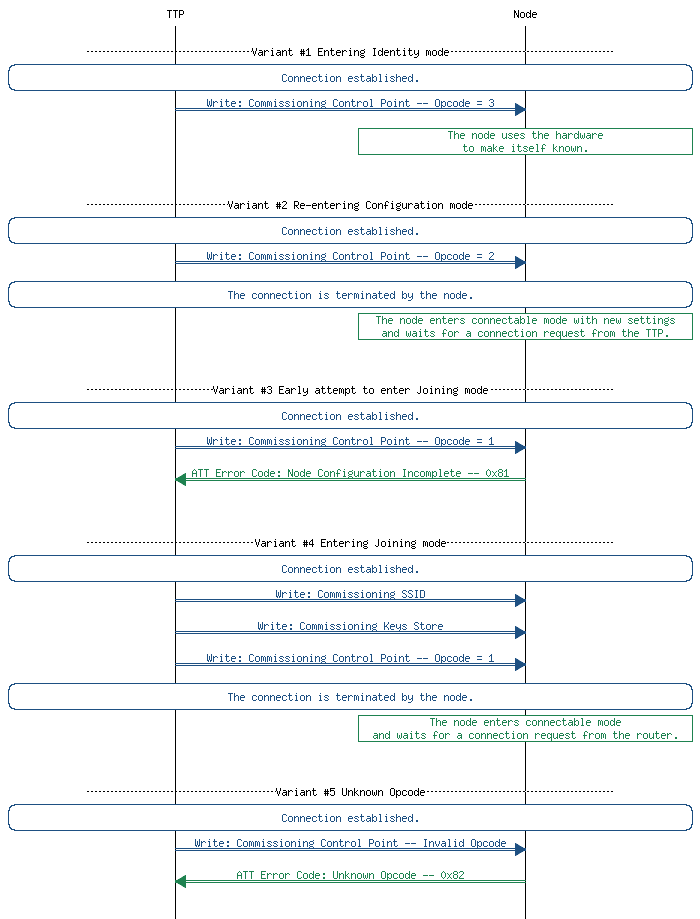|
nRF5 IoT SDK
v0.9.0
|
|
nRF5 IoT SDK
v0.9.0
|
The Commissioning Profile is an example of a proprietary profile that can be used to add nodes to a network using Bluetooth low energy (BLE). This profile is not a standard profile. It is defined by Nordic Semiconductor to demonstrate how commissioning can be achieved.
The Commissioning Profile is used to transfer settings from a BLE central (for example, a smartphone) to a BLE peripheral (a leaf node) that is to be added to a network. The BLE central is used as a trusted third party (TTP) between the BLE peripheral and the router.
Profile dependencies: This profile requires the Generic Attribute Profile (GATT).
The profile defines the following two roles:
The following diagram shows the relationships between services and the two profile roles.

A node instantiates one instance of the Node Configuration Service.
The TTP shall support the BLE Node Configuration Service.
| Service | Trusted Third Party |
|---|---|
| Node Configuration Service | M |
The TTP shall be tolerant when receiving the following ATT Error Codes defined by the application:
| Name | Error Code |
|---|---|
| Node Configuration Incomplete | 0x81 |
| Unknown Opcode | 0x82 |
The TTP configures the node by writing the characteristics of the GATT database. Based on the desired mode, the TTP may need to write the Commissioning SSID and the Commissioning Keys Store characteristics first, using the GATT Write procedure. The TTP requests one of the modes that are defined for the node using the Commissioning Control Point. Each mode requested by the TTP is characterized by an Opcode that is written to the Commissioning Control Point, using the GATT Write procedure. Writing the Commissioning Control Point ends the procedure.
All modes defined for the node are listed below.
| Node modes | Description |
|---|---|
| Joining mode | The node enters connectable mode to accept a connection request from the router to join the network. Must be preceeded by writing the Commissioning SSID and the Commissioning Keys Store characteristics. |
| Configuration mode | The node enters connectable mode to accept a connection request from a TTP. |
| Identity mode | If the hardware allows it, the node changes its appearence to make itself known by the user. |
See Commissioning Control Point for more information about the modes.
When the DFU target is in DFU mode, it is in GAP General Discoverable mode and is connectable. The 16-bit alias of the Node Configuration Service UUID is advertised in the advertisement data, along with the full name (NodeCFG).
The following message sequence chart shows a typical commissioning procedure between a TTP and a node.

All supported characteristics specified by the Node Configuration Service on the target are set to Security Mode 1 and Security Level 1.